
Internal Jugular Vein Commencement Termination Relations Tributaries Applied Anatomy
The internal jugular vein (IJV) is the major venous return from the brain, upper face and neck. Gross anatomy Origin and course It is formed by the union of inferior petrosal and sigmoid dural venous sinuses in or just distal to the jugular foramen (forming the jugular bulb). It descends in the carotid sheath with the internal carotid artery.
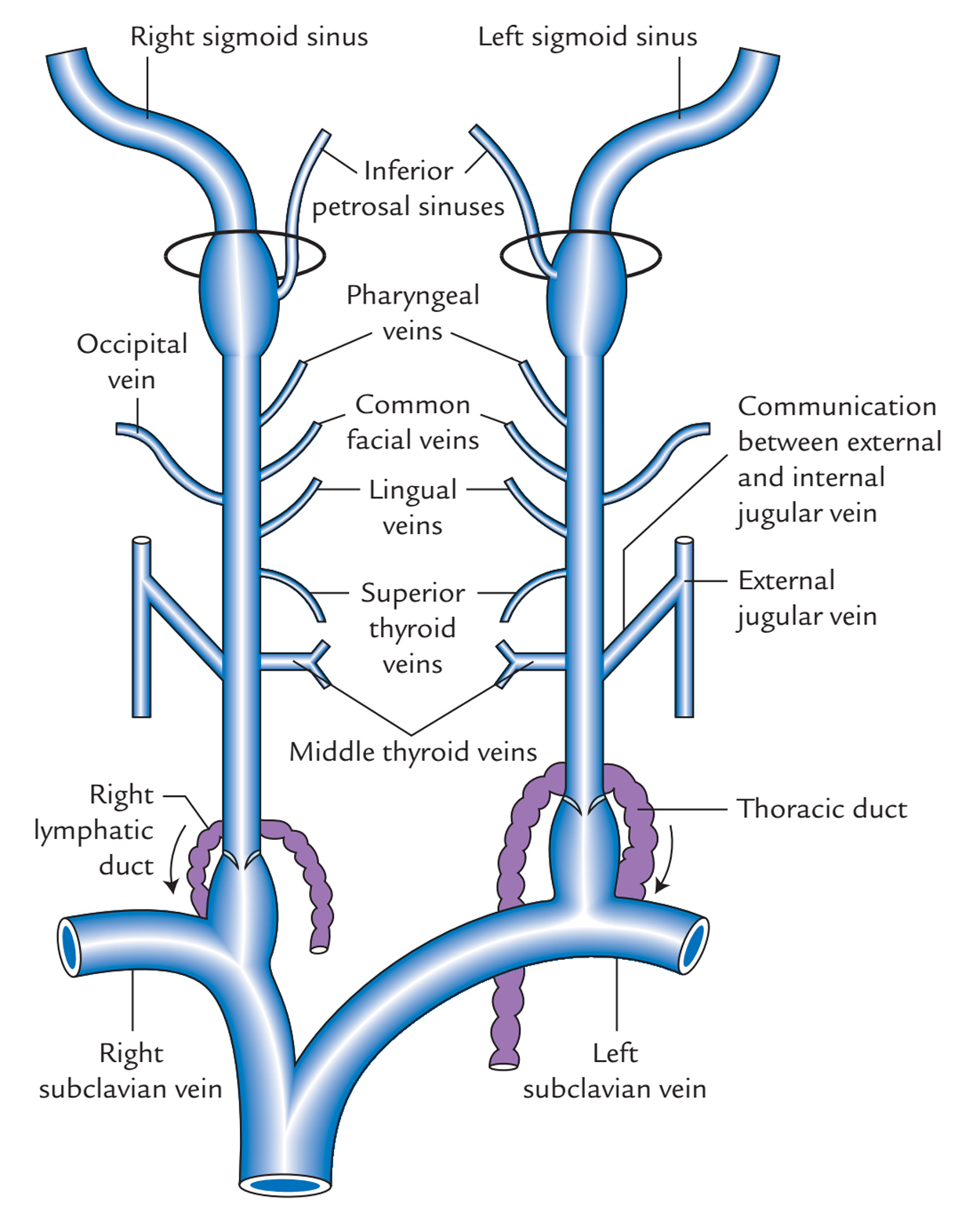
Internal Jugular Vein Earth's Lab
Percutaneous cannulation of the internal jugular vein uses anatomic landmarks to guide venipuncture and a Seldinger technique to thread a central venous catheter through the internal jugular vein and into the superior vena cava. Three approaches (central, anterior, and posterior) are used; the central approach is described here.
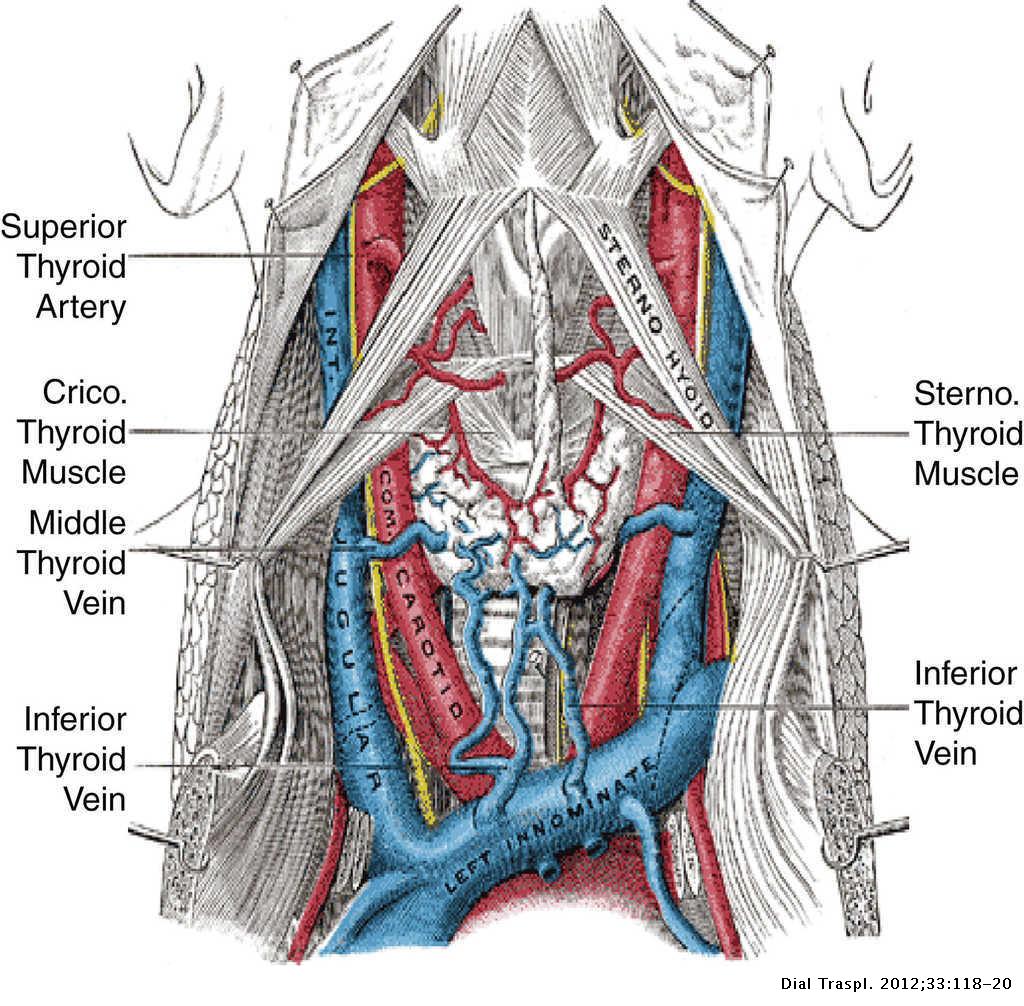
Internal Jugular Vein
The internal jugular vein (Latin: vena jugularis interna) is a blood vessel that arises from the junction of two intracranial venous sinuses - the inferior petrosal sinus and the sigmoid sinus.The internal jugular vein collects venous blood from the brain, skull, and superficial parts of the face and neck.. Internal jugular vein (lateral view) by Anatomy.app

Internal Jugular Vein And Common Carotid Artery
The internal jugular vein (IJV) originates at the jugular foramen, runs along the lateral neck, medially to the sternocleidomastoid muscle from the carotid triangle, and ends at the brachiocephalic vein. The IJV is one of the four components of the vascular sheath of the neck, together with the common and internal carotid arteries, the vagus.

Image result for internal jugular vein Brain Anatomy, Human Body Anatomy, Human Anatomy And
Function. Blood Flow. The internal jugular vein is the largest vein in the neck and is the main source of venous drainage, or blood flow, down from the brain, returning deoxygenated blood back from the head and neck to the heart, where it will be pumped to the lungs to become oxygenated again. The internal jugular vein also serves as the main.

Internal Jugular Vein Anatomy ANATOMY
The internal jugular vein ( v. jugularis interna) collects the blood from the brain, from the superficial parts of the face, and from the neck. It is directly continuous with the transverse sinus, and begins in the posterior compartment of the jugular foramen, at the base of the skull.
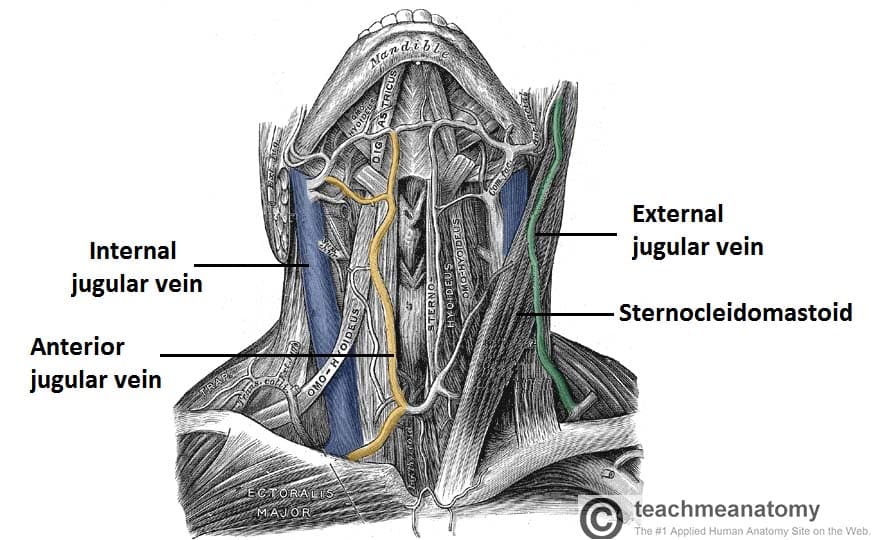
Vena jugularis interna MedkoM
Internal jugular vein being the principle vein supplying to the head and neck area, descends from the posterior portion of the jugular foramen having a superior and inferior bulb in the base skull and neck region. From the base of the skull to the neck, it lies lateral to the internal carotid and common carotid artery, between these two.

Figure 1 from Cerebral venous drainage through internal jugular vein Semantic Scholar
The external jugular is a large vein used in prehospital medicine for venous access when the Paramedic is unable to find another peripheral vein [4] It is commonly used in cardiac arrest or other situations where the patient is unresponsive due to the pain associated with the procedure.
/GettyImages-530309436-cf8e158016cf4dc0a81e12ecb221d1ee.jpg)
Internal Jugular Vein Anatomy, Function, and Significance
The anterior jugular vein is a paired blood vessel that drains the anterior aspect of the neck. It emerges from the confluence of the superficial submandibular veins beneath the chin and drains into the external jugular vein. Less frequently, it may drain directly into the subclavian vein.

Right internal jugular vein (Vena jugularis interna dextra); Image Yousun Koh Jugular
The internal jugular vein is a paired jugular vein that collects blood from the brain and the superficial parts of the face and neck. This vein runs in the carotid sheath with the common carotid artery and vagus nerve. It begins in the posterior compartment of the jugular foramen, at the base of the skull.
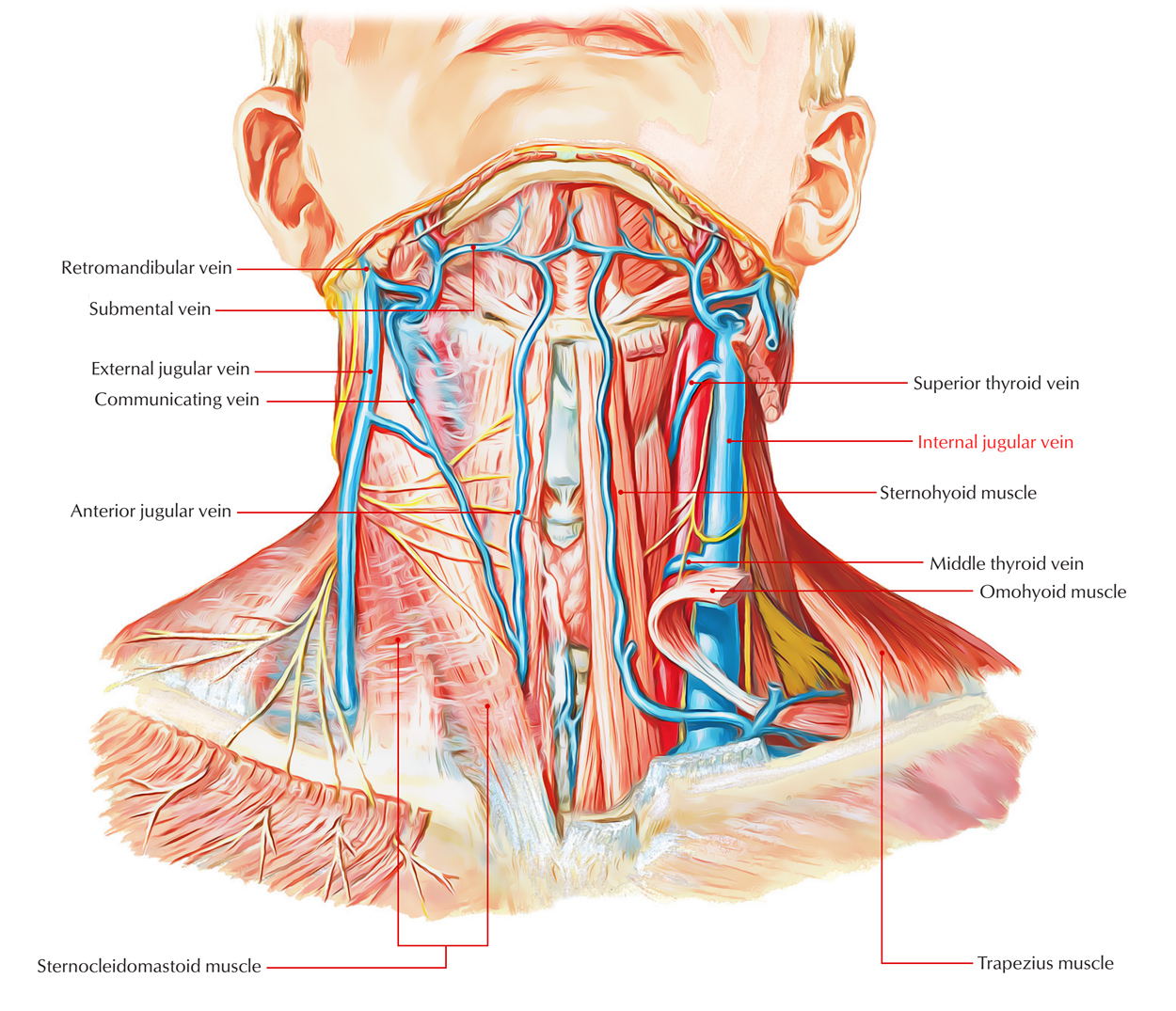
Internal Jugular Vein Earth's Lab
Anatomy Where are the jugular veins? The two sets of jugular veins are the interior and exterior jugular veins. Exterior jugular veins: These veins provide blood flow return from areas outside your skull. They start at the occipital (ox-ip-it-al) veins at the back of your head. From there, they run downward on either side of your spine.
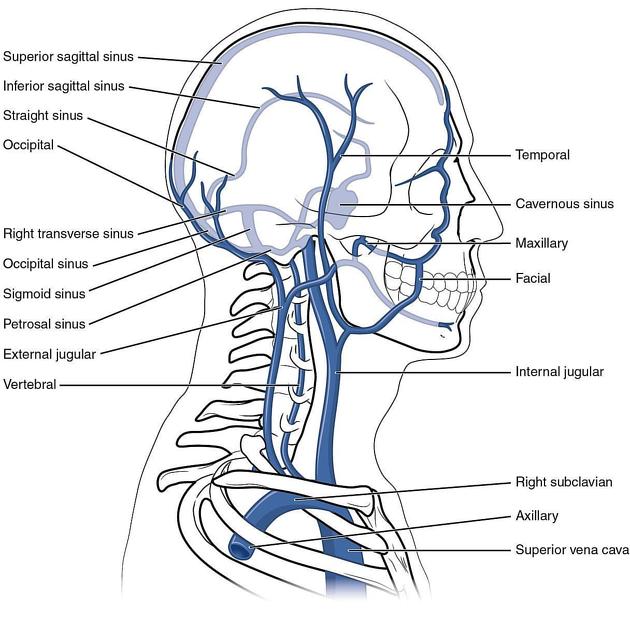
Vena jugularis interna pacs
Background. Internal jugular (IJ) vein thrombosis refers to an intraluminal thrombus occurring anywhere from the intracranial IJ vein to the junction of the IJ and the subclavian vein to form the brachiocephalic vein. It is an underdiagnosed condition that may occur as a complication of head and neck infections, surgery, central venous access.
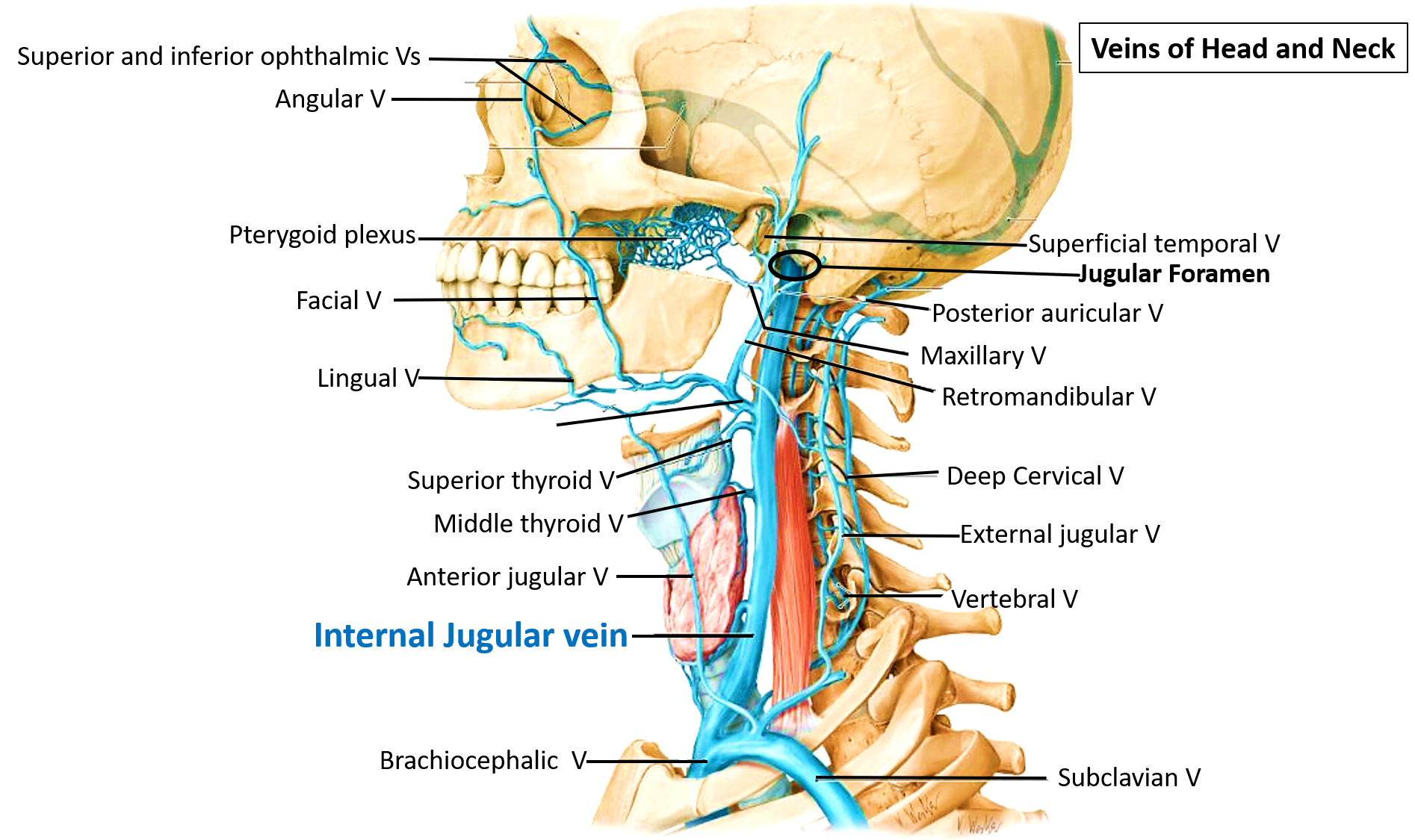
Internal Jugular Vein Course Tributaries Relations AnatomyQA
The internal jugular vein is formed by the union of the sigmoid and inferior petrosal venous sinuses. Here, the internal jugular vein is dilated as the superior bulb lying in the posterior part of the tympanic floor. Course

Vena jugularis interna Wikipedia
Traditionally, when internal jugular vein cannulation has been performed, external anatomical landmarks and palpation have been used to guide insertion of the needle into the vessel. However,.

Internal Jugular Vein Anatomy ANATOMY
Structure and function. There are two sets of jugular veins: external and internal. The left and right external jugular veins drain into the subclavian veins.The internal jugular veins join with the subclavian veins more medially to form the brachiocephalic veins.Finally, the left and right brachiocephalic veins join to form the superior vena cava, which delivers deoxygenated blood to the.

Internal Jugular Vein—Central Venous Access Anesthesia Key
Internal jugular (IJ) vein thrombosis refers to an intraluminal thrombus occurring anywhere from the intracranial IJ vein to the junction of the IJ and the subclavian vein to form the brachiocephalic vein. It is an underdiagnosed condition that may occur as a complication of head and neck infections, surgery, central venous access, local mali.